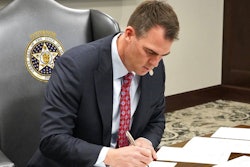ACT has released four new policy platforms geared to promote education and workplace access for students and to align the nation’s education and workforce systems to meet their needs.
At a Tuesday morning “Aligning Our Education and Workforce Systems: A Look Ahead” panel session in Washington, D.C., ACT officials and education and workforce leaders discussed the new platforms and the changing demands of the education and job spheres, including the notion that there are now many other pathways to college and a career.
Among the biggest changes in education is a newfound sense of urgency and communication across colleges, and the realization that “high school is not enough,” said panelist Dr. Martha Kanter, executive director of the College Promise Campaign and New York University Senior Fellow. “The equity and learning efforts of ACT are critically important” to reduce the widening equity gap, she said.
ACT’s policy Platforms will provide recommendations to local, state and federal policymakers with a focus on four areas: K-12 education, higher education, career and technical education (CTE) and workforce development.
At the K-12 level, panelists agreed, more work is needed to prepare students for success beyond high school. Deborah Delisle, executive director and CEO of the Association for Supervision and Curriculum Development (ASCD), added that educators need to think about student success as a “revolving holistic measure.”
Recommendations for accomplishing this task included providing a holistic education that involves problem-solving curriculum and addressing the needs of the “whole learner” by allowing students to find their passion and pursue it through personalized learning, Delisle said.
Kanter suggested that integrating schooling into career opportunities like internships and apprenticeships should be considered as more high school and college students work while completing coursework.
There were also concerns about the cost of college and how institutions need better data-assessment tools to understand how students make high-stakes decisions about their education and intended career path.
“We don’t understand well enough about how young people make choices,” said Chauncey Lennon, managing director and head of workforce initiatives and global philanthropy at JPMorgan Chase. “We have to recognize that our data systems can barely understand these issues.”
Lennon added that students need updated labor market information to make informed decisions about career choices. With this data, students can learn how the economy works and how to transfer learned skills across workforce sectors.
Referring to what she called a “crisis in career counseling,” Jane Oates, executive committee member of Working Nation, suggested that business leaders, teachers and counselors place information online for students to access, making technology the “great equalizer.” Other panelists added that intersections in counseling, tutoring and online information can help counselors personalize and simplify the information given to students making life-changing decisions.
The information is too nuanced to give bad information, Kanter cautioned. “There are just so many tools out there that people can use to communicate well.”
Cross-sector leadership and engagement in education, government, business, technology and philanthropy also were also among critical strategies the panelists discussed in terms of how to align students’ education and career outcomes. Areas of emphasis the panelists spoke on included equitable dual-enrollment programs and a need to rebuild CTE programs and mutually beneficial partnerships between businesses, colleges and local communities.
The 2018 ACT Policy Platforms document breaks down how various education and workforce sectors can reconsider their practices to better support all students – even those who took non-traditional paths after high school.
“We were really the first country who went all-in in college,” Lennon said. “We’ve hit the wall and we’re trying to come back.”
The challenge now, he said, is coming up with language that affirms that there is more than one route to college and a career.
“Our formal education systems forget this … we are creative, innovative, and entrepreneurial,” Oates said. “Someone should be able to pick and choose” his or her academic and technical skills.
Tiffany Pennamon can be reached at [email protected]. You can follow her on Twitter @tiffanypennamon.















